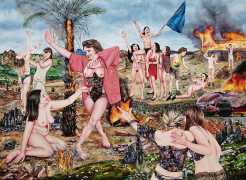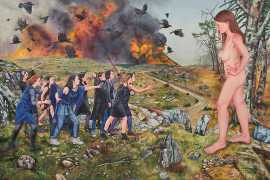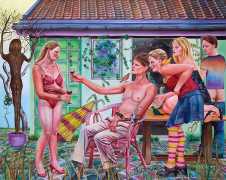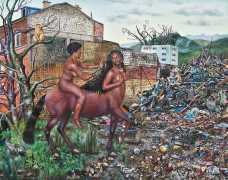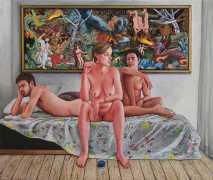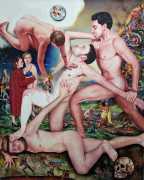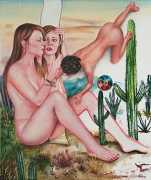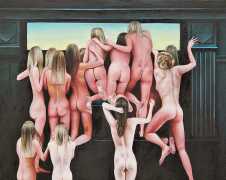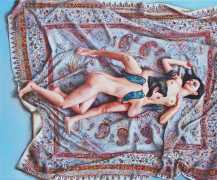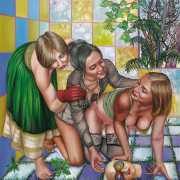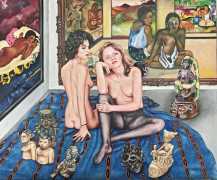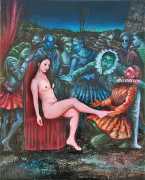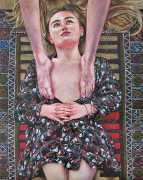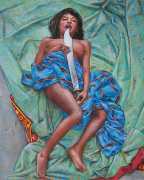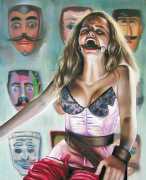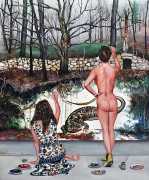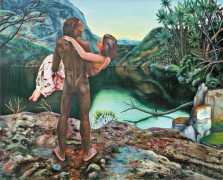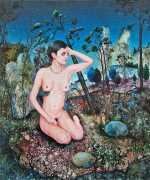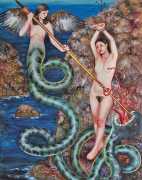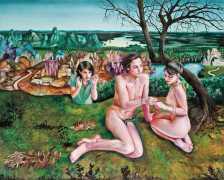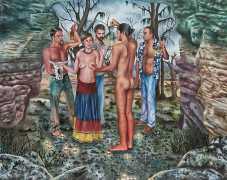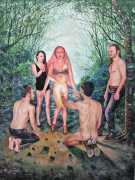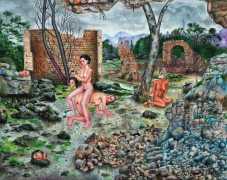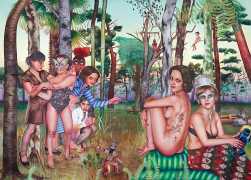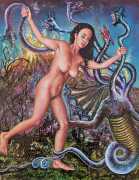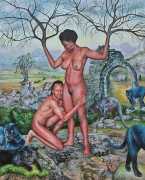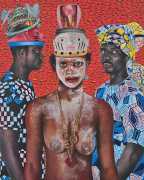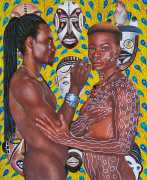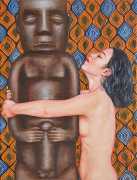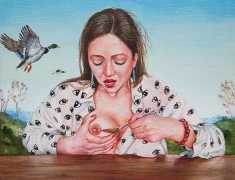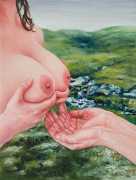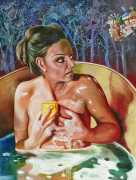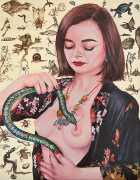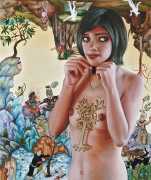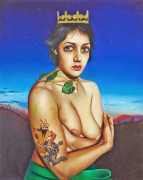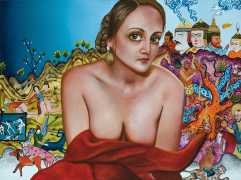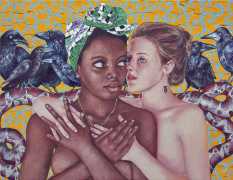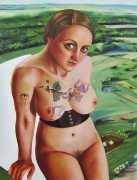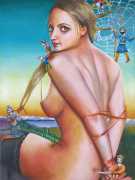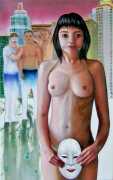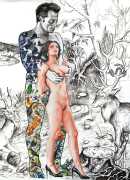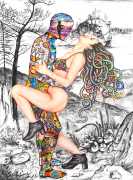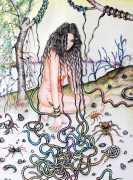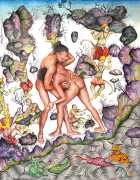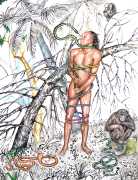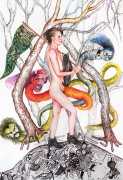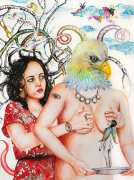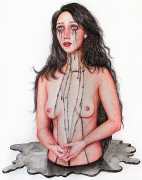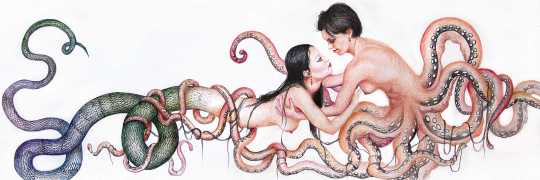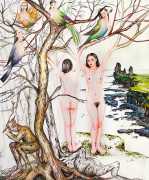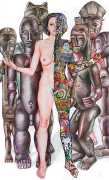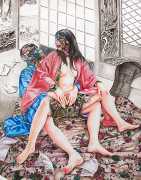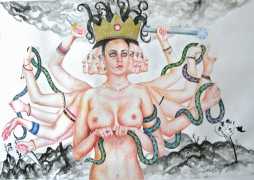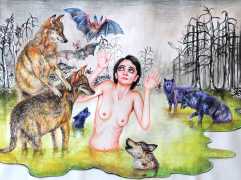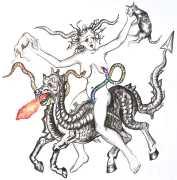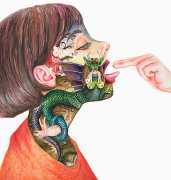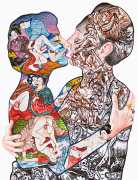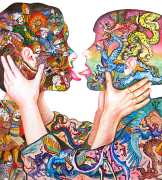 Nazanin Pouyandeh grew up in Tehran, the capital city of Iran, where she enjoyed drawing and painting from an early age. In 1998 however, during a brutal purge by the Iranian Ministry of Intelligence, her father, Mohammad Ja’far Pouyandeh, a Sorbonne-trained human rights activist and translator, was murdered along with several other ‘dissidents’. Shortly afterwards eighteen-year-old Nazanin moved to Paris, where she continued her education.
Nazanin Pouyandeh grew up in Tehran, the capital city of Iran, where she enjoyed drawing and painting from an early age. In 1998 however, during a brutal purge by the Iranian Ministry of Intelligence, her father, Mohammad Ja’far Pouyandeh, a Sorbonne-trained human rights activist and translator, was murdered along with several other ‘dissidents’. Shortly afterwards eighteen-year-old Nazanin moved to Paris, where she continued her education.
In 2005 she graduated from the École Nationale Supérieure des Beaux-Arts in Paris with a diploma in fine arts, and in 2007 received her masters degree for research in the plastic arts from Université Paris I. She now lives and works from a studio in Arcueil, in the southern suburbs of Paris.
Nazanin Pouyandeh’s work is hard to categorise, but is colourful and rich in social and emotional meaning. It is also often playful, with humorous elements which are readily appreciated by anyone familiar with the subtexts of human interaction.
 Art writers and critics often try to generalise, or sound over-analytical about her work, but here is Vincent Delaury’s attempt at an introduction.
Art writers and critics often try to generalise, or sound over-analytical about her work, but here is Vincent Delaury’s attempt at an introduction.
Upon discovering Nazanin Pouyandeh’s paintings, we are confronted with an enigmatic form of narrative figuration that constantly raises questions. The viewer is instantly immersed inside the image – the imagery even (a smooth rendering and a myriad details) – with a clear sense of dramatisation, and yet the mystery and a continuing doubt remain. The singularity of her paintings emerges from this very sense of the elusive; in the manner of our dreams that bring the opposites together, this enigmatic approach produces open-ended scenes giving free rein to our imagination and our own phantasmagorical projections. Pouyandeh’s ‘petrified temporalities’ or ‘freeze-frame’ paintings allow the viewers to initiate an investigation, immersing themselves in an extremely diverse pictorial repository – ancient painting, primary arts, comics, photography, film, television, video games and the internet – that gives her painting their extremely vivid dimension.
This genre-bending approach that comes forward in the screen-surface of the canvas is also present in the in-between space that constantly nourishes Pouyandeh’s mixed artistic production, combining eastern and western influences. However, far from being a mere juxtaposition of cultures, her paintings offer a new, eccentric and humanist imagery that is far beyond a mere synthesis of the diverse elements brought together. The artist leads us elsewhere, toward a highly singular, many-layered universe, informed by heterogeneous images and dreams, as well as by the power of the collective unconscious as studied by Jung, who rightfully identified archaic and universal images within religious beliefs, myths and tales.
All in all, Nazanin Pouyandeh’s cultural hybridisation – a phrase that could serve as a possible definition for the synthesis orchestrated by this ‘painter-film director’ creating a coherent universe from several different cultures – brings her closer to a teller of tales, taking her viewers on a dizzying journey through personal biography, time, history, cultures and continents.
Nazanin Pouyandeh’s website, where she regularly shows new work, can be found here, and her Instagram account is here. Her work is shown regularly at the Galerie Sator in Romainville, eastern Paris, whose website is here.
We are very grateful to our friends Yuri and Gérard for suggesting the inclusion of this artist, and for supplying most of the images.


